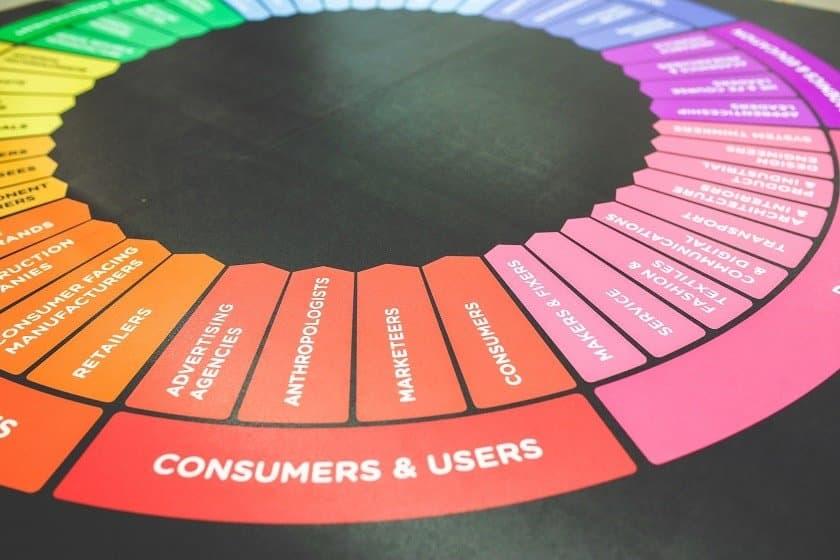Marketing: it is mainly about brainstorming, planning, organizing, scheduling, or in other words – creating a strategy on how to sell a product or service. It requires an out-of-the-box mindset, and we know well that creative profiles often excel in marketing. However, there is a need for a tool that would boost this creative process and keep pace with the seemingly chaotic creative thinking.
One way to do this is by introducing mind maps to your marketing tasks. You might be surprised how handy they may come in brainstorming marketing strategies, market research, competitors’ analysis, and identifying the target customer, to name a few. For that reason, we have identified 4 areas in marketing where mind mapping can become your next favorite creative tool.
1. Brainstorm Marketing Strategy
Summer is about to begin, and there is no better time to start making your marketing strategy for the summer if you have not done it already. It is crucial for each team member to have a clear vision of what they want to achieve for a certain period of time. There is no better way to do that than by having a collective brainstorming session. To achieve this, you need to have your main goals placed in a central position of your strategic mind map. Now schedule a team meeting, and let’s get started!
Now, marketing campaigns need to be timely, so one way to create the mind map is to divide it into months, and then the months into weeks. Assigning a specific objective for each week will keep you focused on your long-term goals. With all this in mind, it will be impossible to go off-track. The next step you could do is include everything you will need to achieve your goals: resources, market analysis, competitor’s analysis, financial projections – literally everything you will need along the way. All these elements presented in different branches of a mind map will give you a neat and excellent perspective of your progress.

1.1. Social Media Marketing Strategy
As a component of all marketing strategies, social media strategies can also be created in a mind map. Mind mapping generates ideas in a fast and organized way – perfect for brainstorming meetings and writing advertisements! You can divide a social media marketing strategy like this: a different branch for each channel (Fb, Twitter, Instagram etc.), one branch for influencers that can help you build you brand identity, one branch for conversion strategies and, of course, one for the target audience profile. It will be much easier to show the interconnectedness between the elements when presented in a mind map.

2. Target Customer
Target customer analysis is another marketing area that can be presented in a mind map. You can either do it as part of your marketing strategy, but I suggest you do it separately because in that way you will be able to get into details and analyze your customer in a multi-faceted way. So, you can place your customer at the center of the mind map, and before you start branching it, think of all the different profiles that would buy your product or service. In most cases, there is more than one buyer persona that can become your ideal customer.
Next step: start branching the mind map – one branch for each buyer persona. Then branch them even more according to specifications: age, gender, educational level, occupation, or any additional insight that you might find useful. For example, if you are a furniture company you might make one campaign for newly-wed couples that are planning to buy a new apartment, a family-oriented campaign, and a completely different one for elders. These are all distinct customers with different needs and problems. While making the target customer mind map, think of the solutions you could offer them and strive towards building a loyal, long-lasting, and quality customer relationship.

3. Market Research
Now that you have your target customer, it is time to make market research. But before I begin the step-to-step, or should I call it a branch-to-branch guide, let me explain why it is great to present the research in a mind map. First of all, all the data you will collect will be well-organized and structured. You could also make a collaborative mind map in which you and your team could add information and branches in real-time and be able to see the big picture simultaneously. Also, your mind map will be unique and look attractive when you have to present it to upper management. The reason for this is that most people are visually oriented, and it will be easier for them to navigate through a mind map than through a chart.
With this in mind, we can start mind mapping our market research. One branch could be dedicated to market information, another one to market segmentation, the third one for market trends, and a fourth one for competitors analysis.

3.1. Competitors Analysis
You know what they say: know your enemy. Conducting a competitor’s analysis is very much connected (and integrated) with market research and our 4th mind mapping use in marketing – the SWOT analysis. This is a crucial component of strategic management because we need to know the strengths and weaknesses of our competitors in the market before we start planning our own strategy.
To begin with, start by identifying at least 20 competitors. In one branch of the mind map place their name, location, number of employees, and what types of products or services they sell. In a second branch, you may cover their past and present strategies. Do not forget their SEO structure, keywords, URL architecture, and internal links – they are all important information for their market placement. A third branch can be dedicated to their content, and by content I mean literally everything: blog posts, whitepapers, case studies, videos, webinars, news, FAQs, manuals, eBooks… everything you can think of! The fourth branch of the mind map can be dedicated to their social media presence, i.e. their profiles on Facebook, Twitter, Instagram, LinkedIn, Google+, YouTube, etc. While making the mind map and adding data in every branch, try to detect their strengths and weaknesses – and move on to the 4th marketing mind map.

4. SWOT Analysis
Mind maps and SWOT analysis are two sides of the same coin. It is impossible to make the analysis without having it look like a mind map. It is a piece of cake! You write SWOT at the middle of the mind map, and then you make 4 main branches, one for each category of the analysis respectively: Strengths, Weaknesses, Opportunities, and Threats. Then, you sub-divide the branches into smaller chunks that would contain keywords or bullet-points for each main component. The SWOT analysis will help you prioritize and coordinate your actions according to market and competitors.
In a nutshell
We saw how minds maps have a wide application in marketing. They can be used for creating a marketing strategy, social media campaigns strategy, analyzing your target customer, market research, competitors analysis, SWOT analysis and much more. A mind mapping tool that can make all of this possible is iMindQ – try it and see for yourself. It contains many ready-made templates you can download for further reference. Enjoy mind mapping! And if there are any new ways you use mind maps in marking, do let us know in the comments below.
About the author

Tea Duza, Literature enthusiast with an unfathomable interest in art in general. Believes that literature can change the world. Moto: ‘There’s not such thing as too many books – only not enough bookshelves.’ Bike and jazz lover who goes through life with a healthy doze of skepticism. Travelholic. You can connect with Tea on LinkedIn.



